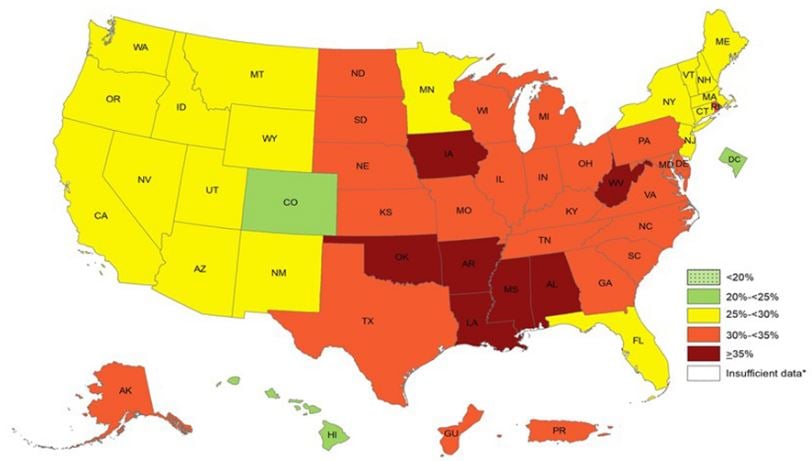

President Donald Trump had his annual physical. He weighs 243 pounds and stands six feet and three inches tall. That gives him a body mass index of 30.4, which is considered “obese.” About 40% of Americans are obese, according to data from the Centers for Disease Control and Prevention (CDC). That is about 93.3 million adults.
The obesity number has risen sharply since 1999/2000 when it was 30.5%. That compares with 39.6% for 2015/2016. The CDC’s calculation is based on: “BMI was calculated as weight in kilograms divided by height in meters squared, rounded to one decimal place. Obesity in adults was defined as a BMI of greater than or equal to 30.” The organization has a “Healthy People Goal” of 30.5% of Americans who are obese, targeted by 2020. The number, however, is going the other way.
Obesity has been expensive for the United States, based on CDC numbers. The primary reasons are health-related: higher incidence of “heart disease, stroke, type 2 diabetes and certain types of cancer that are some of the leading causes of preventable, premature death.” The cost of this, based on figures for 2015/2016, is $147 billion a year (the CDC uses 2008 dollars as its benchmark). That yields a medical cost of $1,429 per obese person above people who are of normal weight.
The president likes fast food, according to his own statements. He joins other Americans who make bad food choices, among the major reasons they are obese. Stamford Health Care studies indicate that “a diet in which a high percentage of calories come from sugary, high-fat, refined foods” is a major cause of weight gain. The organization suggests several things people can do to move below the 30 BMI obesity level. These include a diet rich in fruits and vegetables, which could not be more different from what is found on fast-food menus, although 24/7 Wall St. has identified “The Healthiest Option at Every Fast-Food Restaurant.”
Among other actions that obese people can take to cut their weight is a restricted diet of 1,700 to 1,800 calories a day. People should control portions. For example, a single serving of meat should be “no larger than a deck of cards” People should weigh themselves daily to check their progress. And obese people who want to lose weight would benefit from 30 minutes of “modest intensity” exercise a day. One good example is walking. The president’s doctors say he does not get any exercise beyond an occasional round of golf.
Whatever President Trump’s doctors tell him about his weight problem is likely to be ignored. Dr. James Krieger, clinical professor of medicine at the University of Washington and executive director of Healthy Food America, recently said, “Most people know that being overweight or obese is unhealthy, and if you eat too much that contributes to being overweight. But just telling people there’s a problem doesn’t solve it.”
At least the president does not live in one of the states where obesity is most prevalent. According to the 24/7 Wall St. article “States With the Highest Obesity Rates,” most of these are in the South.

Thank you for reading! Have some feedback for us?
Contact the 24/7 Wall St. editorial team.



